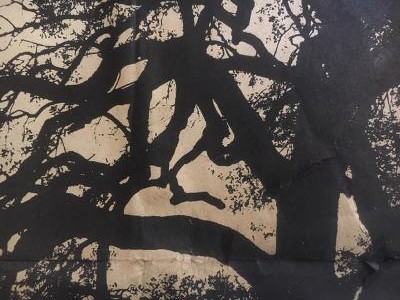The following article first appeared in the Sunday, February 26, 1978 edition of the “Ojai Valley News” on Page A-12. The article is re-printed here with their permission.
Technology vs. nature’s wisdom
————————-
Our environment
————————-
by John E. Nelson, M.D.
As the torrents of water which fell from the sky eased a bit and we all surveyed the damage to the manmade artifacts surrounding our lives, we could not help but be reminded of our closeness — and vulnerability — to the forces of nature.
Especially sad was the story of the family who lovingly labored with their own hands for nearly two years to build a beautiful new home near a picturesque stream. They had moved in a scant two days before that stream turned into a raging river, severely damaging their house and converting much of their property into a rocky wasteland.
Mankind has traditionally viewed itself as a species whose technology could potentially free it from such whims of nature. An illusion to be sure, this way of thinking has been carried to extremes in our cities where it is possible to exist for weeks without seeing a tree.
Isolated in concrete apartments and steel vehicles, citydwellers feel safe from nature, but vulnerable to each other. So they reinforce their windows with bars and watch television, only to witness scenes of freeways clogged with miles of cars buried under snow and of their neighbors freezing to death in their apartments when the electricity failed.
Here in our rural Ojai Valley we have so far been able to keep in close enough contact with primal energies to know better. We can see firsthand that the primary rule of all nature is change, and that this rule must be respected at all costs.
THIS VALLEY’S RECENT floods began in a monumental change witnessed by no human. The awesome energy of the water we all watched pass through our lives was actually imparted to it hundreds of millions of years ago when the Topa Topa mountains to our north were thrust above the ocean floor by forces we can barely imagine.
Since that time, nature has changed those mountains and our valley with each rainfall, etching first rivulets in the hard rock which became gorges which became canyons in the foothills, finally emerging as fertile alluvial fans covering most of the valley basin.
And simply because we have built houses here in the last 150 years, these changes will not cease. Our best technology will not stop them. We can only seek to understand them so that we ourselves may change in harmony with them.
One means we have developed to help us understand how man-made changes relate to natural changes is the Environmental Impact Report (EIR). By law, an EIR must be ordered by any agency who must rule on changes which may have a “substantial adverse impact” on our environment. A well-prepared EIR will bring expert minds to bear on the potential problems inherent in any anticipated change.
A good idea. But obviously, the words “substantial” and “Adverse” are open to interpretation by the powers-that-be who can file a “negative declaration” allowing them to bypass this vital process. This is often done with shortsighted impunity, such as recently occurred when the city and county planned to chop down 17 trees to widen and reroute South Montgomery Street.
Fortunately, a public outcry put a halt to that misguided project.
BUT MORE CHALLENGES are forthcoming. The recent floods will undoubtedly renew efforts for concrete channelization of the waterways which course through our valley. Those who seek to establish the primacy of technology over the wisdom of nature will argue that these sterile Los Angles-type canals are necessary to protect our homesites.
The futility of such thinking was recently demonstrated on Old Creek Road where the county decided to “improve” a natural river-bed crossing with a high concrete edifice. Although a lot and homesite just downstream survived the great floods of 1935 and 1969, this time the water cascaded across the new obstacle in its path, crashing down to opposite side with such force that it formed a giant whirlpool which swept away 20 feet of the lot.
Such events make clear the fact that all the desirable and safe homesites in the Ojai Valley are already filled. The only way we can cram more people in is to put then in precarious perches or destroy the few remaining undeveloped green belts and natural water channels.
Rather than changing nature to create an illusion of safety, wouldn’t it be better to let nature’s inevitable wisdom shape our future changes?


A timely article from 42 years ago. We still haven’t adapted to work with nature.